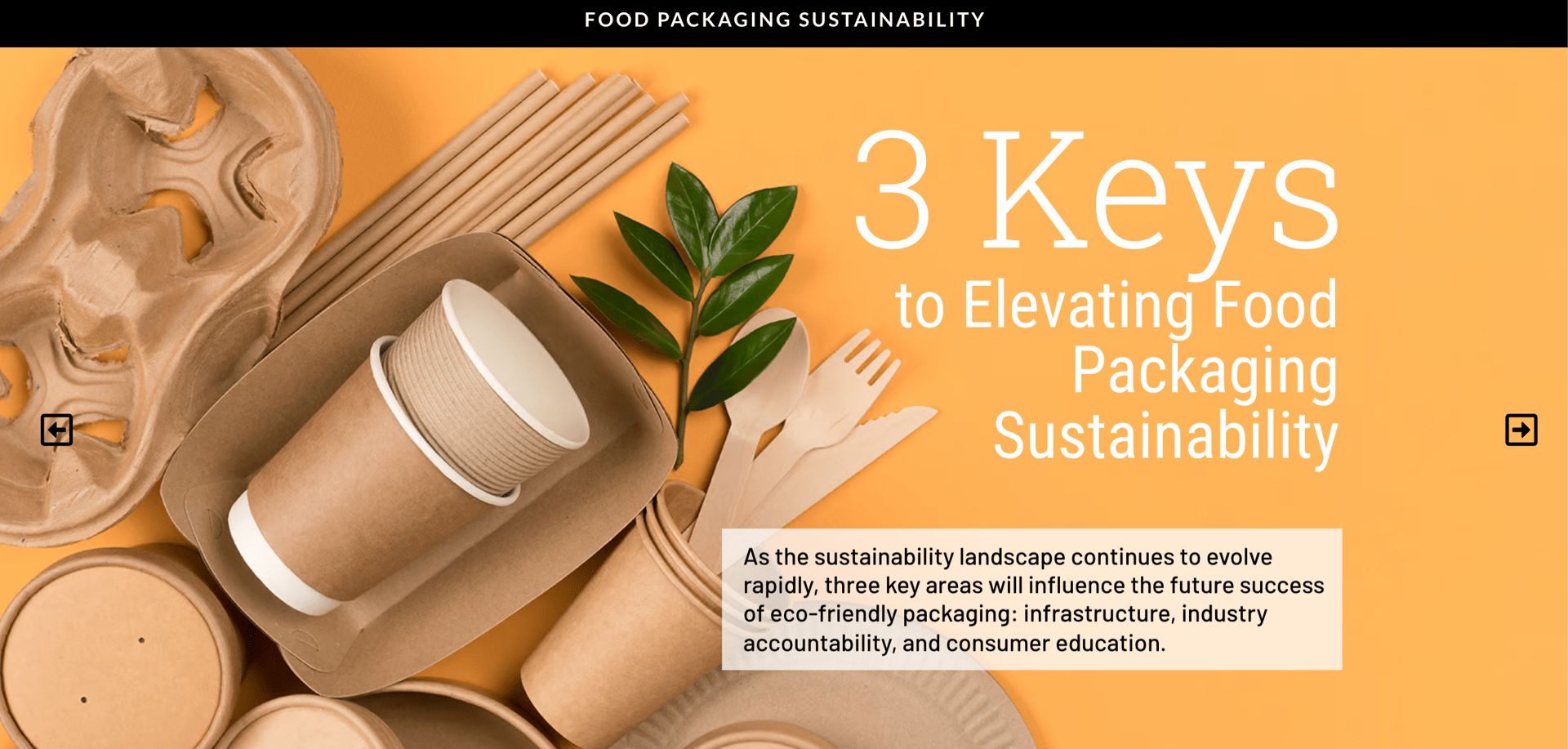Cleaning | Sanitation
Changing Consumer Attitudes on Sustainability
Food and beverage manufacturers need to take decisive action now or risk being left behind in a rapidly evolving market. Those that lead in digital transformation will emerge stronger, more agile and better equipped to navigate future disruptions.
Developing a Digital Transformation Roadmap
to Overcome ‘Option Paralysis’
The food and beverage industry is at a pivotal point going into 2025. Companies understand that digital transformation is essential, but they are spoiled for choice and every decision is fraught with challenges. The result is companies falling behind due to “option paralysis” and a reluctance to disrupt existing systems.
Food and beverage was a key market of the recent IFS report, which surveyed global manufacturing leaders. IFS found that while manufacturing leaders admit their businesses cannot survive without the right technology, fewer than 10% qualify as digital leaders. A striking 65% of respondents labeled themselves as “laggards” who are falling dangerously behind and have stalled at the early stages of digital transformation with no firm plans in place.
They are suffering from option paralysis, where every option is seen as essential. Add to this the sheer volume and rapid pace of technological advancement, and you have indecision, which slows digital transformation progress.
Photo courtesy: Getty Images / aydinmutlu
By Maggie Slowik
Getting to grips with digital transformation
According to the IFS report, digital leaders invest 45% of their budget on digital transformation, driven by clear strategies and ROI-focused investments. Meanwhile, laggards continue to fall deeper into the digital abyss, paralyzed by too many choices, leading to the inability to evaluate new technologies.
Technology has the potential to improve production optimization, energy/waste management, and design and development, but only if companies are able to successfully integrate technologies into their existing ecosystem.
So, how can food and beverage manufacturers turn the tide? Through identifying challenges, suddenly the road to digital transformation becomes clear and the benefits plain to see.
1. Cybersecurity remains an indiscriminatory force
The IFS report shows that cybersecurity was the top business challenge for 36.5% of food and beverage respondents — and it’s no wonder when we consider how cybersecurity attacks on manufacturers’ systems, equipment and technology are trending up and can affect companies of all sizes. Dole, Sysco and Mondelez are just three of the big names in the food and beverage industry that experienced cyber incidents in 2023 alone.
Any downtime on production lines by cyberattacks can lead to a chain reaction of delays, which puts strain on organizations, costing them already limited time and resources. The ransomware attack on Dole in February 2023, for example, impacted shipments to grocery stores and had costly repercussions.

Maggie Slowik
Global industry director for manufacturing, IFS
2. Climate challenges create new reporting confusion
Meeting ESG and sustainability demands was the second most-pressing business challenge for 34.9% of food and beverage respondents in the IFS report. While it found that many manufacturers are actively developing ESG initiatives, most lack a credible ESG strategy despite identifying climate change as a top concern.
Data collection and management remains the number one ESG reporting challenge for manufacturers, but the introduction of new regulations, such as the SEC disclosure requirement, is creating a new level of regulatory uncertainty that is holding up production and delivery within the food and beverage industry.
A circular approach to sustainability
Encouragingly, the IFS research uncovered how manufacturers are particularly hopeful about the impact of ESG on their businesses. The sentiment is now shifting from ESG being just a compliance-driven activity to one that can drive significant positive changes in lead time and quality, while enabling new business models, such as circularity.
In fact, the research found that 27% of food and beverage companies plan to prioritize developing a sustainability strategy and team in the next two to three years, with a further 20.6% planning to embed sustainability goals in operations.
Executed correctly, sustainability measures can bring new value to the food and beverage ecosystem. Take Digital Product Passports (DPPs) as a case in point. DPPs will play a pivotal role in advancing circularity by providing detailed, blockchain-secured information about the environmental impact of products, their composition, their production and history. DPPs will enhance transparency, streamline recycling processes and align with consumer demands for sustainable goods.
3. Supply chain burdens
Food and beverage manufacturers are increasingly focused on improving the resilience of their operations, driven by pressure to deliver more with fewer resources. But the clock is ticking on resilience. According to the IFS report, over a quarter of food and beverage manufacturers still identify supply chain disruptions as an ongoing business challenge.
Drilling down further, the research found that 82% of manufacturers believe their business won’t survive more than one to three years without a stronger commitment to technology.
The localization of global supply chains is set to improve resiliency
Cost is no longer the prime driver for supply chain decisions. Instead, it’s a balancing act between factors like product lead time, quality and reduced carbon footprints. Manufacturers are now considering geographic strategies to optimize supply chain resilience, opting for closer or politically stable sourcing destinations.
The offshoring trend is coming to an end as manufacturers realize that localization strategies, such as friendshoring and reshoring, can provide greater quality control, reduce environmental impacts, improve speed to market and offer better IP protection.
The IFS research found that improving agility and flexibility of operations is now a top priority for 23.8% of food and beverage companies in the next few years — and technology can make this a reality. Digital tools, such as AI-driven data pattern recognition, allow food and beverage manufacturers greater opportunities to redesign the supply chain network, implement more rigorous risk assessment tools, and drive better supplier relationships and collaboration.
The fruits of digital transformation are ready for the taking
Manufacturers need to take decisive action now or risk being left behind in a rapidly evolving market. Those that lead in digital transformation will emerge stronger, more agile and better equipped to navigate future disruptions.
Future growth hinges on operational excellence, process innovation, sustainability integration and strong leadership to overcome digital inertia. By redefining value through digital and sustainable practices, manufacturers can turn these challenges into opportunities, positioning themselves to lead in a dynamic, competitive landscape. FE


